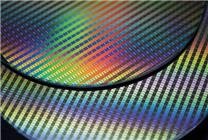Summary
- Collaboration of Giants: Intel and NVIDIA are set to revolutionize graphics technology by integrating RTX GPUs into Intel processors.
- Future of Graphics Cards: With this integration, the demand for discrete graphics cards may diminish, especially in gaming laptops.
- Brand Consistency: Despite advancements, Intel’s Arc Ruixuan brand will continue, ensuring brand recognition throughout architecture improvements.
Intel and NVIDIA: A New Era of Integrated Graphics
On October 23, Kuai Technology reported a groundbreaking partnership between Intel and NVIDIA aimed at redefining the landscape of integrated graphics. This collaboration marks a significant turning point, as the two tech titans work towards integrating NVIDIA’s RTX GPUs directly into Intel’s processors. Although this initiative will take some time to materialize, its implications for the future of graphics technology are profound.
In a recent interview, Intel Fellow Tom Peterson addressed a range of topics concerning Intel’s graphics products, particularly highlighting the enduring value of the Arc Ruixuan brand. He reassured stakeholders that regardless of architectural advancements, the Ruixuan name will remain synonymous with Intel’s graphics offerings. This indicates a commitment to brand consistency, even as the company explores new technologies.
When asked about the development of standalone Ruixuan graphics cards, Peterson maintained a level of discretion, stating that no comments could be made on unreleased products. As a result, the fate of future models, specifically the anticipated second-generation Ruixuan B770 and the third-generation Celestial, remains uncertain.
Despite this uncertainty, Peterson emphasized that Intel’s primary focus lies in improving integrated core graphics. He noted that the collaboration with NVIDIA is a natural progression, particularly for gaming laptops, where the demand for high-performance graphics is ever-increasing.
Innovations in Performance and Design
To address concerns about bandwidth limitations and latency issues that can hinder performance, Intel and NVIDIA will introduce the NVLink high-speed bus. This technological advancement aims to create integrated products built on a Chiplets architecture, paving the way for more efficient data transfer and processing. Consequently, the trend indicates that standalone graphics cards may gradually lose their relevance in the gaming laptop market.
The integration of Intel CPUs with NVIDIA GPUs promises enhanced performance, leading to a decrease in the demand for independent graphics cards. This development benefits both companies, presenting a logical solution from both technical and commercial standpoints.
Interestingly, AMD is pursuing a similar trajectory. Their integrated GPU within the Strix Halo is already competitive with NVIDIA’s RTX 4060, showcasing the limitless potential of integrated systems. The future landscape of integrated graphics looks promising, with advancements that could make standalone solutions less desirable.
Clarifying Naming Confusion
In addition to discussing product integrations, Peterson also addressed the naming conventions surrounding Intel’s graphics cards, particularly the Xe3 architecture. He clarified the classification of the Xe3 integrated GPU with the Panther Lake processor as part of the Sharp B series, while future upgrades will transition into the Sharp C series.
Peterson explained that the Xe3 name was assigned some time ago, and while it exhibits notable improvements, it represents an evolution rather than a revolutionary change. He humorously suggested that the new name could have been Xe2 Prime or Xe2 Plus Plus, raising questions about the magnitude of changes between the Xe3P and its predecessor, the Xe3.
The Future of Graphics Technology
As Intel and NVIDIA embark on this collaborative venture, the industry is poised for transformation. The integration of advanced graphics technology into processors could redefine performance benchmarks in gaming laptops and beyond. As this partnership evolves, the demand for discrete graphics solutions may diminish, reshaping market dynamics and consumer expectations.
In summary, the joint efforts of Intel and NVIDIA signal a paradigm shift in how graphics technology is approached, potentially leading to a future where integrated solutions dominate the landscape. With brand reliability and performance optimization at the forefront, consumers and industry professionals alike have much to anticipate in the coming years.
By crafting a strategy that prioritizes innovation, both companies are not only poised to enhance their competitive edge but also to redefine the user experience for gamers and content creators around the world.






